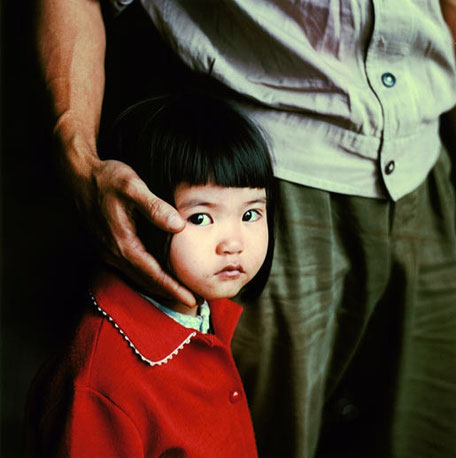Photographer Thomas Billhardt on his autobiographical exhibition January 28, 2016 – Posted in: Blog
The photographer Thomas Billhardt explains before his new exhibition, why socialism does not work and children are the most beautiful people in the world.
Kleinmachnow – Small this apartment in a not quite new row house settlement, small the study with desk, computer and couch. Ceiling height shelves contain folders and storage boxes for the living documents. Also the Schnupperhund at the visitor’s calf is not just large. Photoprints and posters on the wall. One of gray prehistory shows Kremlin boss Breshnev at the lectern of a GDR party, as he applauds himself after the work done. The German commandments behind him gave birth to Ovation. “Drunk!” Comments Thomas Billhardt dryly, “that was always blue”.
Life memories on the walls and in the labyrinths of the brain. And Billhardt adds, “I am a photographer who has to tell me what is behind it,” which happened just now. For example, Chemnitz was born in 1937, with books and pictures circulating around the world, with lectures, talks and participation in film documentaries. Above all, of course, through exhibitions, as well as those opened on Friday in the House of the Left under the title “Immer nah dran”. It shows many political posters from the GDR to Palestine, Vietnam, Nicaragua, Chile, as well as recent photos from Asia, as a long-term photographer of the Unicef Children’s Fund. Photos of children, life here and there, as he has always held it – misery and joy, but always connected with the idea of ”progress”, which concerned intention and hope. In his numerous trips around the world, from Chile to Korea, from North America and Cuba to Vietnam and Kampuchea, he realized that most of the world’s people live in misery and that hunger and war are the worst diseases on earth , Socialism as an alternative? Billhardt formulates this almost salomonically: “a dream, does not work unfortunately!”
After all, the graduate photographer and photo designer in 1968 because of his Vietnam war experience – always closer to the front! – entered the SED. 1989 then back again. The Stasi tried twice around him, he was even planned as a mole in the BND, but his twofold no is documented. They wanted him, because he was so worldly, so smart, and had a soft spot for the beautiful women. He saw it as early as 1961, when the Central Council of the FDJ, together with two writers, sent him to Cuba, unmarried, partisan. In Transit Canada, the door “for immigrants” stood wide open.
He flew to the heat of the revolution. The rapid literacy, a meeting with Raul Castro, the enthusiasm of the masses electrified him. He photographed and photographed, commenting on the Cuba experience today: “I was naive, not yet political.” Well, he admits that he had thoughts from the beginning of his departure. Perhaps he would have gone to the US magazine “life”, but his karma wanted it different. In the West he would have had to fear the competition, which still reached him from 1989 onwards, when he went “over there” to save his valuable picture archive. In the GDR, he always had free travel, got orders from and for everywhere, worked for West-KP’s and for Unicef, and had his photos developed and printed in West Berlin or the FRG because the quality was better there.
What would have been wrong? Thomas Billhardt was almost everywhere, and this already in GDR times. More than 50 times Soviet Union, 13 times in Vietnam, more than 20 times in Italy, otherwise Mozambique, Nicaragua, North and South Korea, New Guinea, China, et cetera pp. He was the first (“alone”) reporter in Pnom Penh, after Pol Pot had been driven out of the “dead city”, he saw South Vietnam immediately after the victory of the north, even visited South of North Korea, “what For a contrast! “The number of exhibition venues is also impressive: from Santiago to Chile, New York and Hanoi, Florence and Manila, East as well as West Berlin, almost everything (including him) was there, and an end for The agile senior not in sight, because many photos are still waiting for publication, and on what Billhardt has to say.
Now on the left, for example. He also lived in an autobiography of the children in the miseries of South Africa as he photographed children (“the most beautiful people in the world”) for Unicef in Manila and was invited to a round trip. In a capital slum, which is crossed by a clattering railway, a driver told him that he had already killed eight people who lay carelessly or drunk on the tracks.
As a photographer, Billhardt was equally close to both political and artistic photography, as a contemporary he recognized his opportunity. He did not shy away from being close to power

